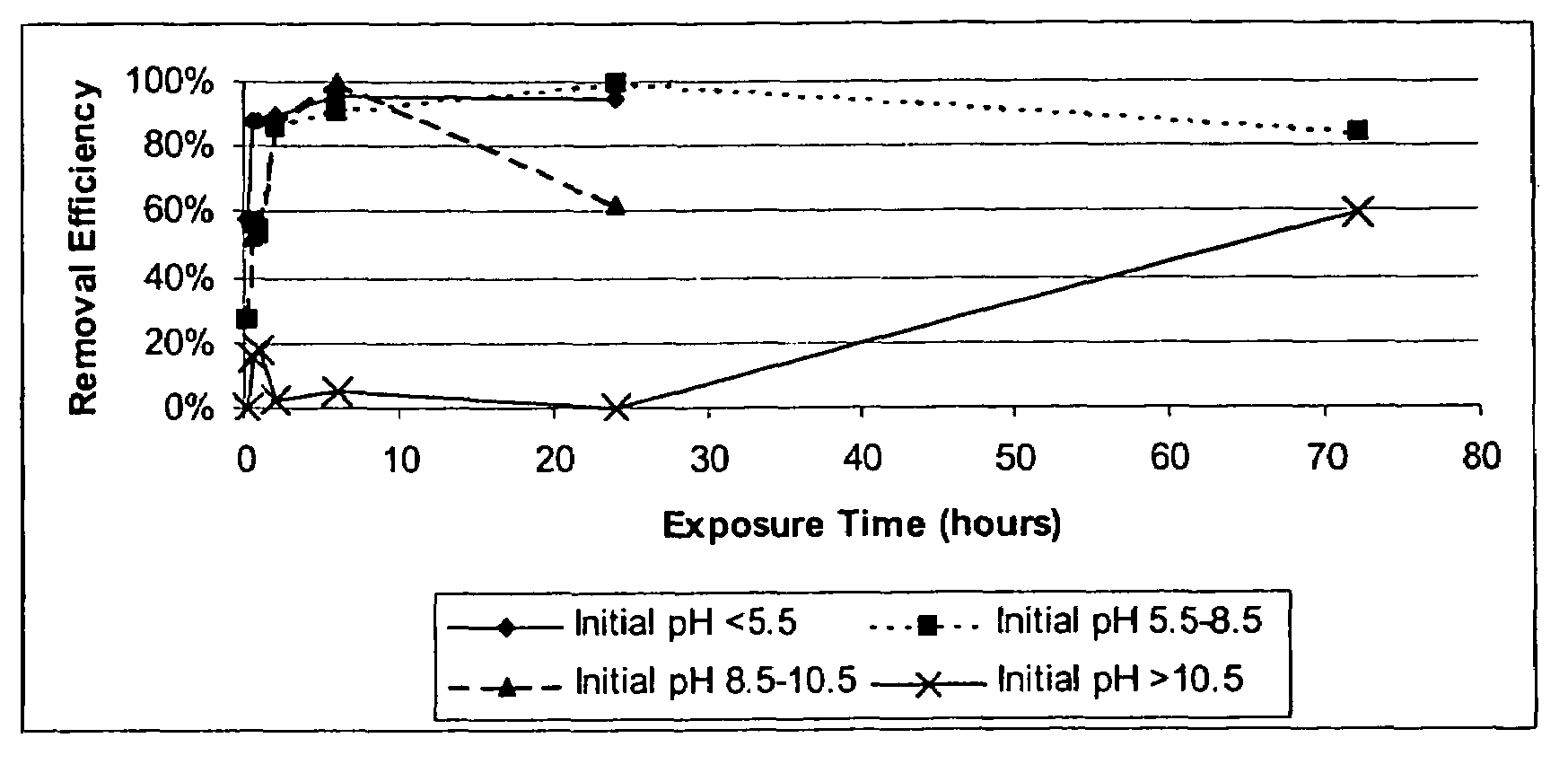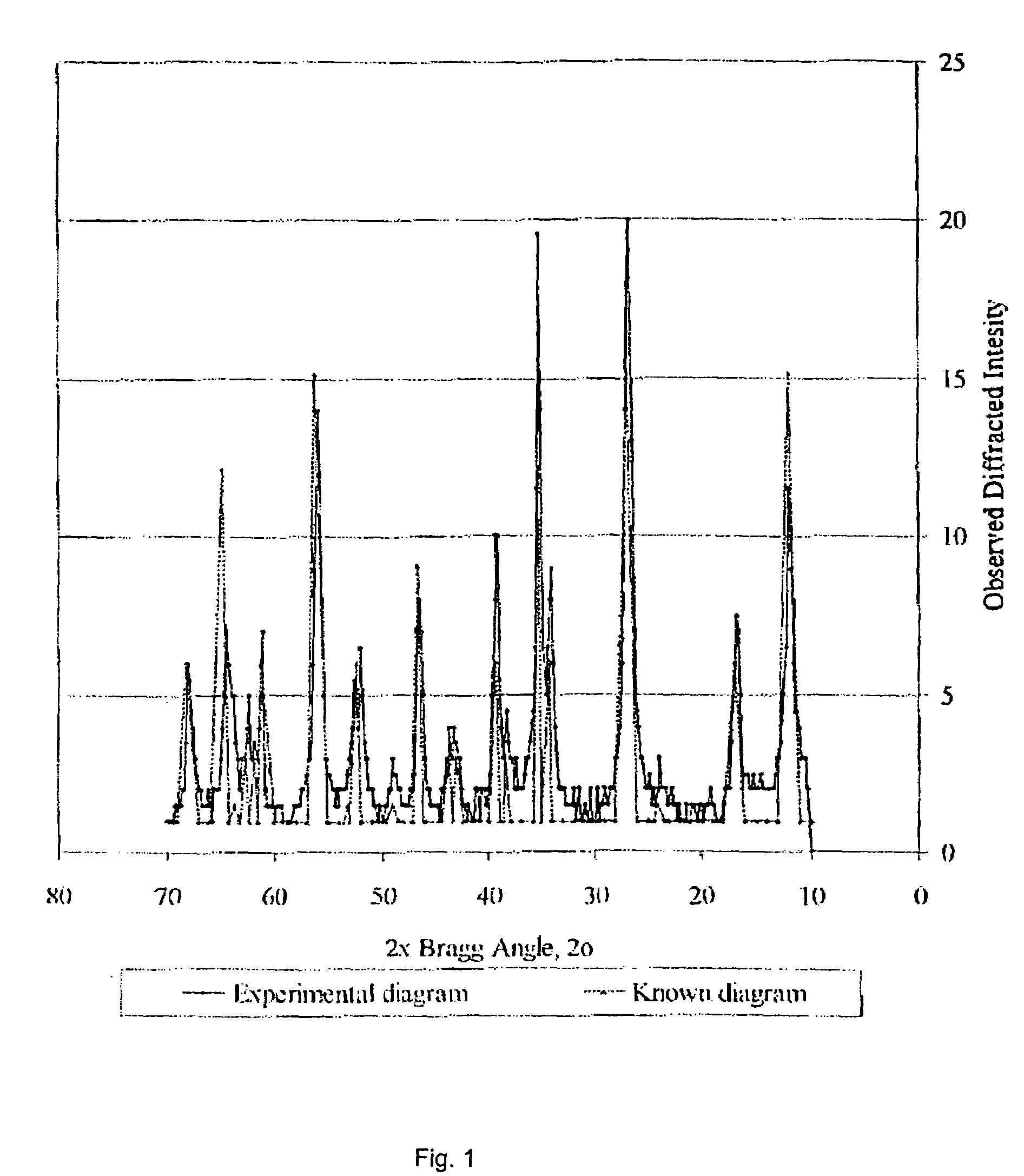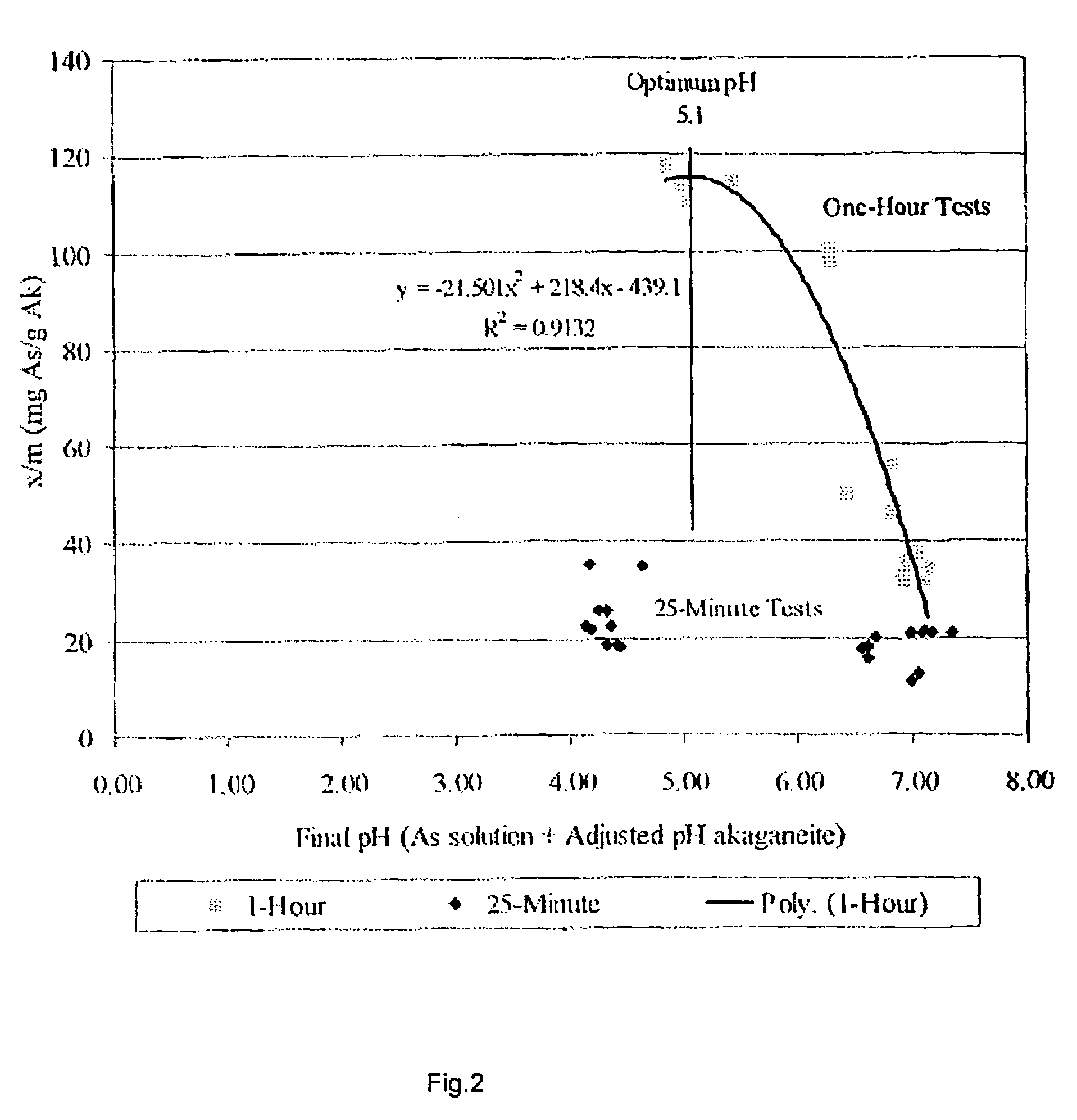Treatment of arsenic-contaminated water using akaganeite adsorption
a technology of arsenic-contaminated water and akaganeite, which is applied in the direction of water/sewage treatment by ion exchange, nickel compounds, separation processes, etc., can solve the problems of arsenic contamination in surface water and groundwater systems, the economic impact of new regulatory constraints on small communities is expected to be severe, and the removal of dissolved species of arsenic is difficult to achieve by coagulation, so as to reduce the cost of water treatment
- Summary
- Abstract
- Description
- Claims
- Application Information
AI Technical Summary
Benefits of technology
Problems solved by technology
Method used
Image
Examples
examples
[0085]The invention is further illustrated and exemplified by the following experimental protocols and results utilizing zeolites and cotton as the carrier media.
Tests Utilizing Zeolites
I. Chemicals and Media Preparation
[0086]A. Akaganeite Suspension
[0087]A 55-gallon (approximately 208 liter) blue high-density plastic container from the Grief Bros. Industrial Shipping Corporation was utilized to make a large volume of akaganeite suspension. As instructed by Schwertmann and Cornell (1991), an initial 0.1 M iron solution was made by dissolving Fisher brand lump ferric chloride, (FeCl3.6H2O) in nanopure water at a concentration of 26.9 g / L. The barrel was incubated at 40° C. for approximately 1 month, after which it was stored at ambient temperature. During the 40° C. incubation, a yellowish orange precipitate was formed, and the pH of the suspension dropped to approximately 1.5. Somatoid, or cigar shaped, crystals were formed. The crystals were approximately 30 nm to 1 um in length as...
PUM
| Property | Measurement | Unit |
|---|---|---|
| concentration | aaaaa | aaaaa |
| concentration | aaaaa | aaaaa |
| concentration | aaaaa | aaaaa |
Abstract
Description
Claims
Application Information
 Login to View More
Login to View More - R&D
- Intellectual Property
- Life Sciences
- Materials
- Tech Scout
- Unparalleled Data Quality
- Higher Quality Content
- 60% Fewer Hallucinations
Browse by: Latest US Patents, China's latest patents, Technical Efficacy Thesaurus, Application Domain, Technology Topic, Popular Technical Reports.
© 2025 PatSnap. All rights reserved.Legal|Privacy policy|Modern Slavery Act Transparency Statement|Sitemap|About US| Contact US: help@patsnap.com



